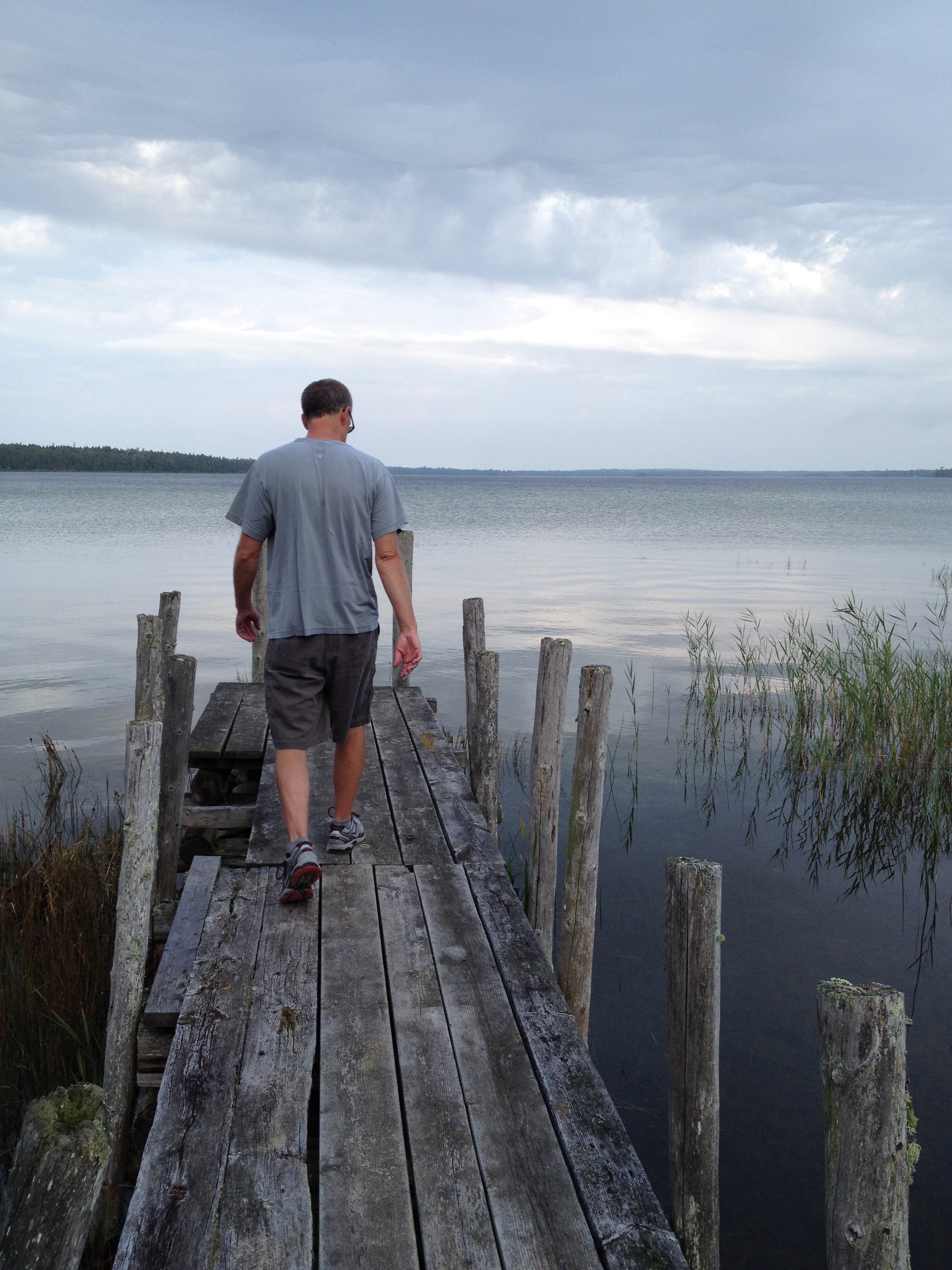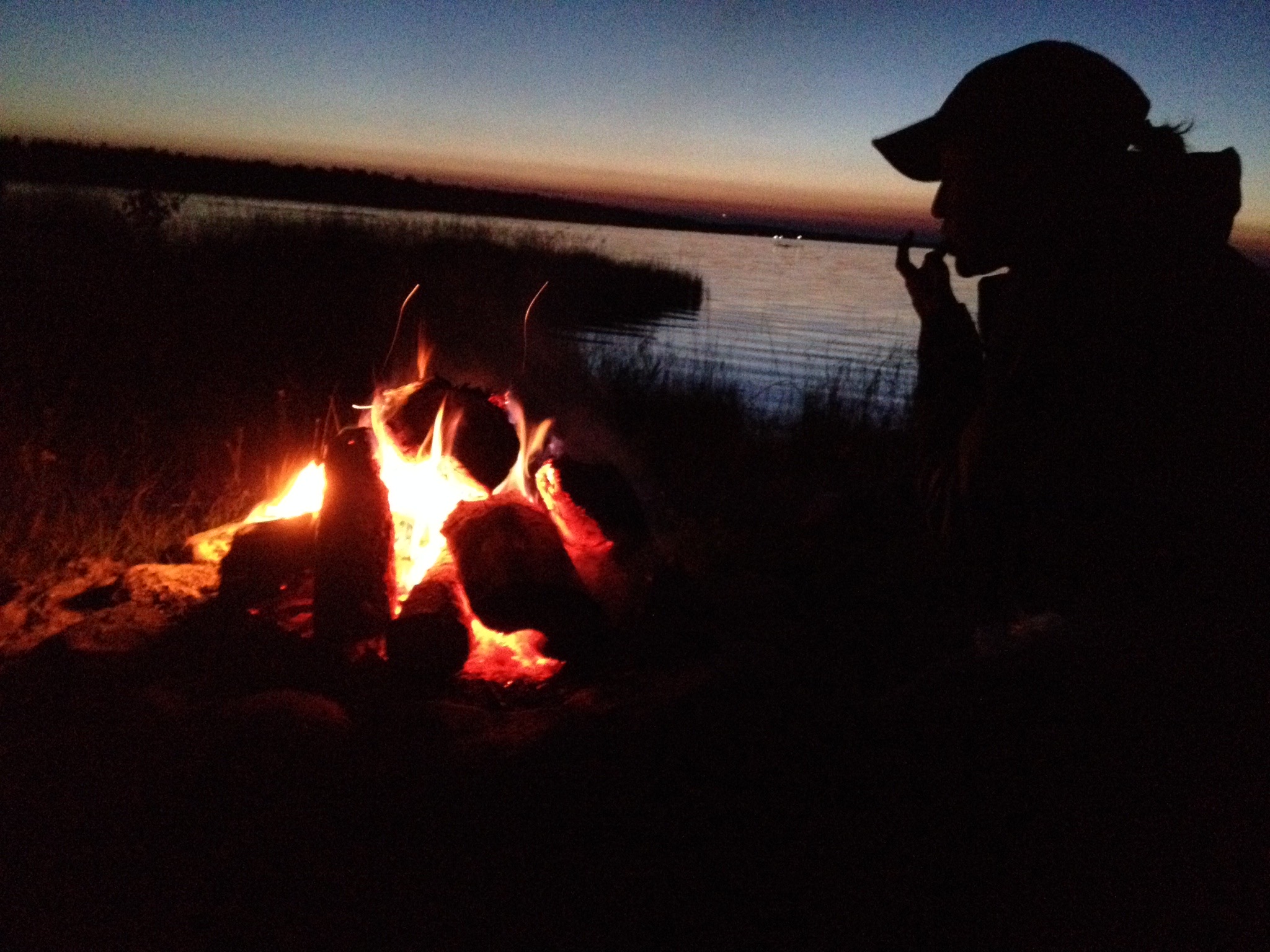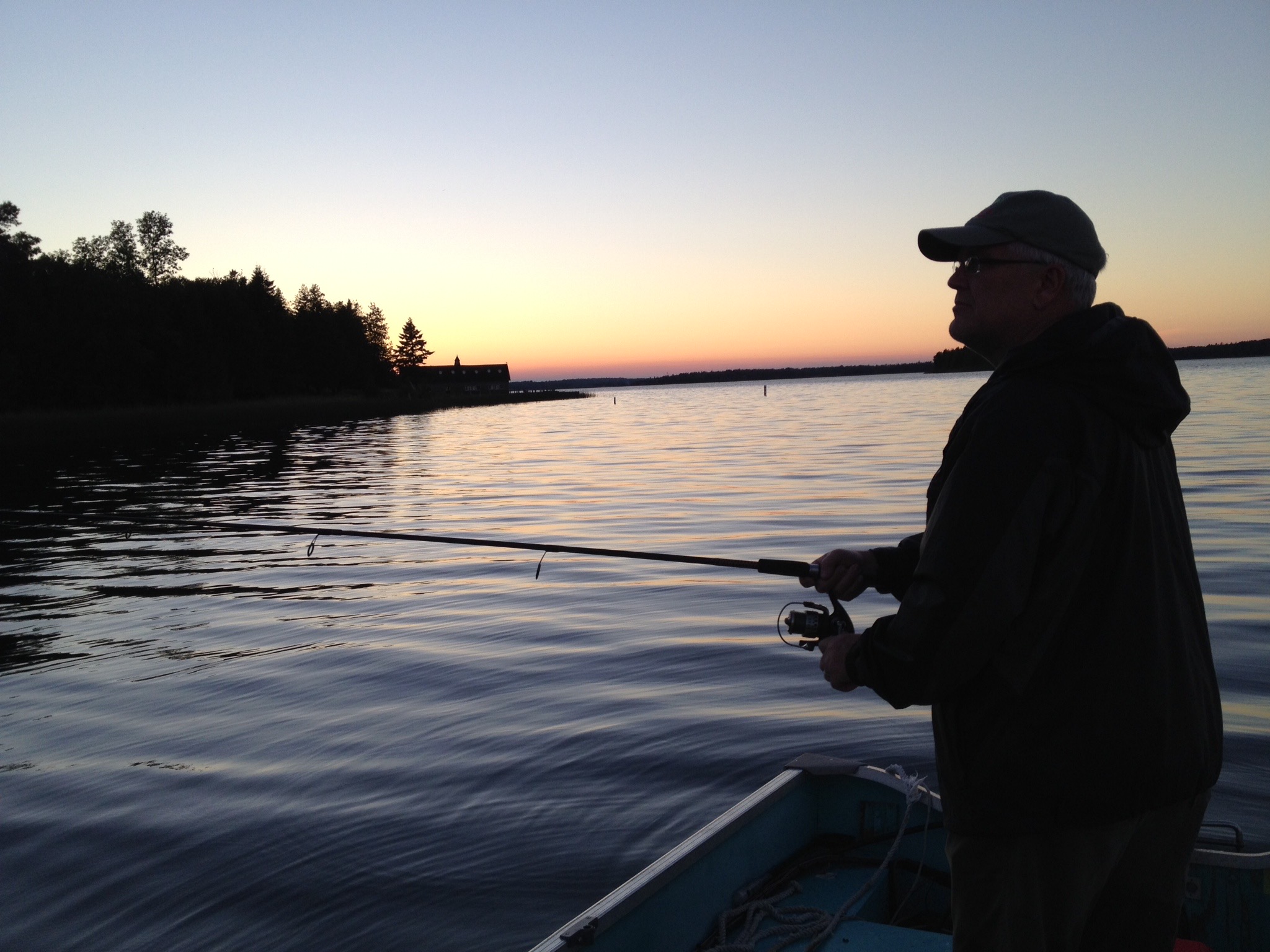During the early afternoon, high above northern Minnesota’s Boundary Waters Wilderness Area, a clash of atmospheric proportions is about to take place. A dividing line between a hot and muggy air to the south and drier, cooler air to the north has developed. An updraft of that hot soupy air bursts through the layer of coolness giving birth to a thunderstorm. It’s not an unlikely event during the month of July around these parts by any means, but all is now set in place for that simple garden variety thunderstorm to evolve into a summertime monster known as a Derecho.
The term Derecho is Spanish for “straight” and over the next several hours the storm will proceed straight along that meteorological dividing line using it kind of like a mapping device, gaining size, speed, strength, moisture, wind, and producing lightning at increasingly prolific rates. On this day in early July, that atmospheric dividing line, invisible to the naked eye, heads off to the east and south a bit, right smack dab through the Straits of Mackinac.
Not long after its inception and its downdraft gusts have already leveled swaths of pines across the northernmost woodlands of Minnesota, the towering thunderhead splits into multiple cells of regenerating nastiness. The close-knit family of storms moves powerfully out over Lake Superior just south of Thunder Bay, Canada. It storms on, growing ever more potent, widespread and dangerous, whipping up ferocious and mountainous waves on the great sprawling open lake.
Making landfall, now, in the Upper Peninsula of Michigan at Ontonagon and cutting across the Keweenaw Peninsula without delay, the congealing line of storms takes on the shape of a bow and has swollen to more than fifty miles across at its leading edge which has darkened to an inky blue and developed a menacing snowplow-like shelf cloud across its low-hanging front. Behind the shelf cloud the storm’s innards glow an otherworldly pale, almost-neon, green. The narrow peninsula stabbing up into Lake Superior was nothing more than a speed bump.
By late afternoon it skirts the southern reaches of Lake Superior once more and then blows ashore at Grand Marais. Wind driven rain and hail lash against the cliffs along the Pictured Rocks National Lakeshore. The leading edge of the storm now stretches from Whitefish Bay down over northern Lake Michigan just off of Naubinway. It’s regeneration and intensification continues.
At Cedar Haven cottage on Marquette Island which is along the northern shores of the Straits of Mackinac, the evening has an odd feel to it. For one thing, the sunset was more than an hour earlier than usual after another gloriously sunny mid-summer afternoon. And, actually, there really wasn’t a sunset. Instead of the usual glowing golden-orange-pink evening treat, things just suddenly seemed to darken over the sunset end of the bay. The evening retreat of gulls, herons and other water foul out to their Goose Island rookery for the night has taken place uncustomarily early. The birds seemed to have a hurry to their winging, unlike most evenings when they seem to lollygag along in the waning light.
Then there was the quiet anchoring of two seemingly unaffiliated sailboats near the protected area we like to call Kurtz’s Cove over on the eastern end of Long Island. Their sailors appear to have settled in for the evening. One overnight mooring of a sailboat in that quiet and peaceful cove is not unusual, but two makes one wonder what the captains and their crews know that we don’t.
The usual fresh and crisp Wilderness Bay is hazy and the air heavy. Looking out beyond the end of the bay, one can see a mountain range of clouds that wasn’t there earlier in the day. With the sun now behind it, the new mountain range appears dark and foreboding and may even be slowly growing before our very eyes.
More to the norm, beach toys, rafts and swim floats lay strewn along the sandy beach, attesting to the fun that was had during the warmth of the afternoon. Boats float in silence at their respective dock posts. Clouds of gnats hover motionless above the tamaracks. A traditional wiener roast picnic has all but wrapped up with brownies and ice cream serving as a delicious final touch. Most of the post-dessert chatting is now taking place inside the bug-less comfortable confines of Cedar Haven. Two fishermen from The Pines cottage next door made a bee-line in the boat for Long Island right after dessert to do some trolling for northern pike in hopes of landing a big one on the last night before they head back to Ohio.
Without fanfare or even notice, darkness settles in across the bay. The air is still and the water glassy smooth, mirroring the swelling embankment of ever-darkening clouds across the entire width of the far end of the bay. A star or two begin to wink on the still water by the dock. The reeds behind the sandbars stand perfectly at rest except for the occasional bump by a clumsy carp. Across the bay, far inland, a hazy diffuse faintly pink flash of heat lightning is the first real inkling that a storm is in the offing. Over the next several minutes, those flashes begin to turn eerily pale hues of hazy pink, yellow and sometimes almost orange as they speckle the horizon from Cube Point south down beyond Autumn Bay and behind the length of Long Island, apparently out of view of the fishermen. There is no thunder yet. All is quiet. The curious heat lightning has caught the attention of the few who’ve remained at the shore and braved the bugs. It’s decided the peculiar conditions should be checked into.
The post wiener roast lull is broken. Cottage doors begin opening and closing as flashlights maneuver through the woodsy paths between. Reports coming in on the weather radio have raised alert to the coming maelstrom. In the gathering darkness, it becomes obvious that even binoculars will not help in spotting the fishermen at Long Island. Besides taking a boat out, there is no way to contact or warn them. Their last-minute fishing trip must be paying off, but surely they’ve noticed the odd and now dangerous sounding weather setting in.
The mast lights of the two moored sailboats at Kurtz’s Cove can be seen glowing steadily, but there is no sign of the fisherman just down from them. It’s not unusual for pleasure boaters and their crews to take refuge among the innumerable quiet coves and protected shorelines throughout the chain of islands during dangerous weather. And in all actuality, another look towards Kurtz’s Cove reveals that there are now three mast lights glowing. Another has sought safe harbor from the impending weather. The fact that they are all three moored in the eastern lee of Long Island makes it seem obvious that whatever they are bracing for is coming from the west, straight across our bay from Cedar Haven, with nothing to hinder or slow its arrival.
With a sense of urgency, the remaining boats are covered and buttoned up if they have covers. Dock lines are checked, tightened and secured. Anchors are deployed for extra stabilization. Some smaller boats are pulled up on the beach out of the water altogether. Beach toys are collected to what is believed to be a safe spot on the sand. The lightning across the bay becomes whiter and more frequent and more vivid. Along the quiet sandbars of the eastern shore of Wilderness Bay, the air still hangs motionless. The tamaracks and cedars that line the sandy beach stand complacently silent. Stars are becoming hazed over by the high-altitude thin anvil cloud blowing off ahead of the storm. A barely audible low rumble rolls around the rim of the bay. In an odd way, it seems more felt than heard.
During the lightshow across the bay, a horizontal band of the palest pastel purple imaginable forms below the black boiling gust front. This band becomes larger and larger as the leading edge of the looming and ever advancing storm now begins to scour over the waters of our very bay. Continual hot-white, jagged, prodding bolts of lightning now pound the mainland and even seem to be jabbing at the water’s surface at the other side of the bay. The blinding flashes are relentless. The ensuing thunder has morphed into a constant distant rumble punctuated regularly by louder percussions that already are slightly rattling the large single pane cottage dining room window that looks out over the bay. All souls except for the fishermen who remain unaccounted for are now inside one cottage or another.
The storm advances. Every thick white bolt of lightning is now accompanied by an almost instantaneous bombardment of ear-splitting thunder. Their sound waves blast down the bay across the smooth water unimpeded until they forcefully connect with the cedars and pines and the cottages themselves, causing them to shake and rumble mercilessly. The thin walls and lack of winter insulation do little to filter the pounding sound. In the strobe-light lightning, a blurry ragged line is seen creeping toward our shore on the surface of the water. Behind the line, everything above the water appears fuzzy and demented, the water’s surface is dark, gray and extremely agitated. The blockhouse at the farthest tip of Long Island from the cottage is no longer visible through the wall of wind and rain. With each flash, the line gets menacingly closer.
Through the veil a dim bouncing light becomes visible. It’s a boat. A small outboard like the one the fishermen took to Long Island, and its coming in as fast as its little engine can manage. In the safety of Cedar Haven, pressed against the large window, onlookers munch on a second round of brownies as if it where popcorn and they were at the movies. The tiny boat breaks though the curtain of rain and using binoculars it becomes obvious that it is the two fishermen from The Pines. The captain is twisting the throttle so hard its handle is about to twist right off. Both are hunkered down with only their tightly hooded heads barely visible above the bow. Both are intensely fixated on the shore ahead as bolts of lightning chase them homeward. It appears they’re afraid to look behind them. As well they should be as the storm stalks them across the water. They sail across the calm water now past the old rock pile by the drop off and beach the little boat. Without missing a step, and with the speed and agility of a whitetail deer, they both are out of the boat and up into The Pines to safety. If a big one was caught, it has been left behind in the boat to fend for itself. They were still wearing their life jackets all the way into the cottage.
The glassy surface between the beach and the curtain-like line shrinks and shrinks until the line crosses the drop-off. Then in no-time flat the cottage is slammed with powerful thunderstorm wind gusts that cause it to groan and shift ever so slightly on the solid foundation posts below its pine flooring. Cold dead remnant ashes puff out of the fireplace and softly settle nearby on the rug with the finest particles left hanging in the air. In the flashes, pines and cedars bend and whip incessantly. Out on the bay, perfectly straight rollers with vibrant-white foamy wind-whipped crests roll into the shallows and slosh over the sandbars and even the beach. Beach toys fly until snared into safety by low pine shrubs. Swimming rafts are airborne and wrap around the trunks of tamaracks by the beach like colorful bowties. Boats yank at their lines, bucking and rolling like bulls. A wave of solid rain suddenly causes the cottage window view to blur to complete obscurity. The deluge of rainwater pastes birch leaves and cedar boughs to the bowing and quivering glass. The bucking boats and beach disappear.
Dripping water announces itself on the front porch. Impatiently, it taps in an increasingly rapid pace on the aged linoleum flooring. Old chamber pots are deployed to catch the invading rain. Now instead of the tapping, a rapid and increasingly loud metal pinging sound fills the front porch and spills into the rest of the small cottage. The piercing pings contrast greatly with the steady roar of the hard rain on the roof above. The storm is doing it’s best to infiltrate our dry and relatively safe cocoon with its wind, rain and lightning. So far, all three have been held at bay, for the most part. There’s another blazing flash, this one seeming to emanate directly over the chimney accompanied by an immediate knee-buckling crash of thunder. Then, the lights go out.
Somewhere out over northern Lake Huron the demarcation line in the atmosphere that the storm had been following begins to break apart. Starting at about Bois Blanc Island, the air gradually became more mixed. The warm, moist air that fueled the engine of this storm system was no longer available out over the chilly northern reaches of the lake. Now all the water it had kept suspended with powerful updrafts within its towering column has nowhere to go but back down to earth, similar to a juggler suddenly allowing all its balls to fall to the ground. The once impressive storm’s life drains mercilessly down on Drummond Island and across the open Lake Huron toward the Canadian side of the lake.
It turns out it was a big Northern Pike that caused the fishermen’s frantic and just-in-the-nick-of-time arrival. They had stayed and fished up to the last second which is a very normal thing to do on one’s last night and that’s when the big one hit causing a fight with the fish that ate up many precious minutes. With lightning already flashing, they finally landed the fish, marveled at its size regrettably for only an instant, then immediately flopped it back overboard and high-tailed it back to the dock. It’s assumed the big Northern then found safety on the sandy bottom protected by a multitude of reeds as it watched the flashing and turmoil on the surface above.
Inside Cedar Haven cottage, the old chamber pots are pinging slower and candles are burning lower. Aged kerosene lanterns are brought out of retirement casting a yellowish tint on everything within its pine paneled walls. A monotonous tender rain fills the cottage attic with its soothing sound. Only faint flashes make it through the canopy of trees now and thunder rolls gently through the pines, birches and aspen from behind the cottage. An occasional heavier thump is all that is left of the larger claps of thunder that originate out over the open lake to the southeast.
Everyone is accounted for and safe. The tamaracks and cedars that line the sandy beach drip but stand at rest once again. The brownies are gone. There will be a lot of boat bailing to do before anyone can go fishing in the morning.










Recent Comments